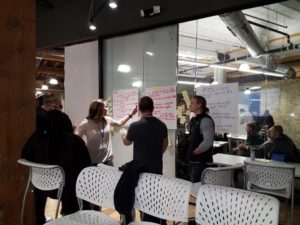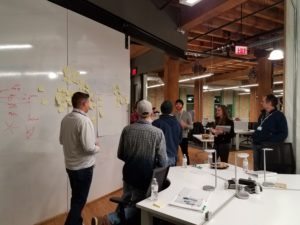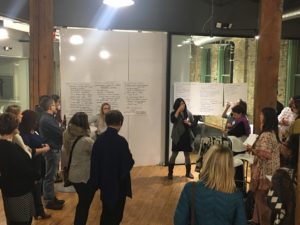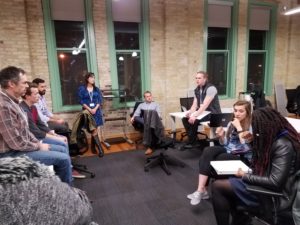 Last night at The Commons, the Betty Brinn/Learn Deep team pinned down a persona for their beachhead customer– now known as “Steve” who manages the makerspace for an area school. The key problems faced by Steve:
Last night at The Commons, the Betty Brinn/Learn Deep team pinned down a persona for their beachhead customer– now known as “Steve” who manages the makerspace for an area school. The key problems faced by Steve:
- “I don’t always know where to go to get the materials I need.”
- “It takes a lot of time to track down where to find supplies (if I don’t already know where to get them).”
- “I have to pick up everything myself.”
- “I have to do this for all of the teachers that want to use my makerspace.”
- “At times, I want to be inspired by the material (so I don’t know what I want until I can see and touch it)”.
The team was able to use that set of problems to filter the ideas generated last week to just those that addressed these key issues. It also led to the creation of a second persona — “Orlando”, who has excess material, but also,his own problems to solve:
- “I have usable stuff that now costs me money to dispose of”
- “I don’t know who would want what I hope to get rid of”
- “I don’t like the fact that my scrap ends up in a landfill”
- “I worry about liability issues if others come on-site to sift through my scrap to take what is of use to them.”
This week’s work: Confirm the assumptions about the problems faced by Orlando, and clarify the vision for a potential solution– what’s the minimum viable product, and what might it look like when fully realized?





